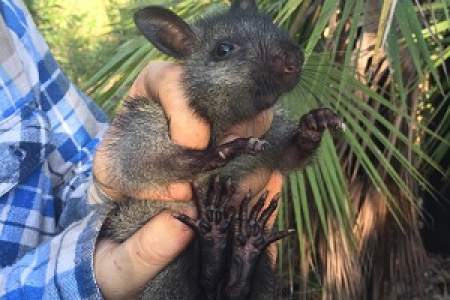Native mammals get new homes for Christmas
Christmas has come early for tree-dwelling mammals in the Top End with Charles Darwin University researchers installing nest boxes in trees for these native animals.
The researchers are trialling almost 200 nest boxes in trees along the Cobourg Peninsula in the hope that black-footed tree-rats, brush-tailed rabbit-rats, phascogales and other arboreal mammals will occupy them.
Project leader, Research Institute for the Environment and Livelihoods research fellow Dr Brett Murphy said the nest boxes would act as alternative shelters to tree hollows for these vulnerable and endangered animals.
Dr Murphy said the team was also investigating the availability of tree hollows in the area. More and hotter fires in recent times are thought to have destroyed many of these hollow nests, possibly causing a decline in abundance of tree-dwelling mammals.
“Many of these animals that live on Cobourg Peninsula have declined in other parts of Northern Australia, so we hope that they will use these boxes,” he said.
Dr Murphy said the nest boxes were initially installed in the Territory Wildlife Park’s black-footed tree-rat enclosure, where researchers found the animals were willing to use the nest boxes.
The research team includes CDU conservation biologists Professor Michael Lawes and Professor John Woinarski, research associate Dr Leigh-Ann Woolley and PhD candidate Natalie Dowling. The team also includes Dr Ian Radford from the Western Australia Department of Parks and Wildlife and Associate Professor Brendan Wintle from the University of Melbourne.
They plan to revisit the Cobourg Peninsula nest boxes during the dry season next year to find out whether animals had been using them.
The project has received funding from the Commonwealth Government’s Australian Research Council and the Western Australia Department of Parks and Wildlife.
